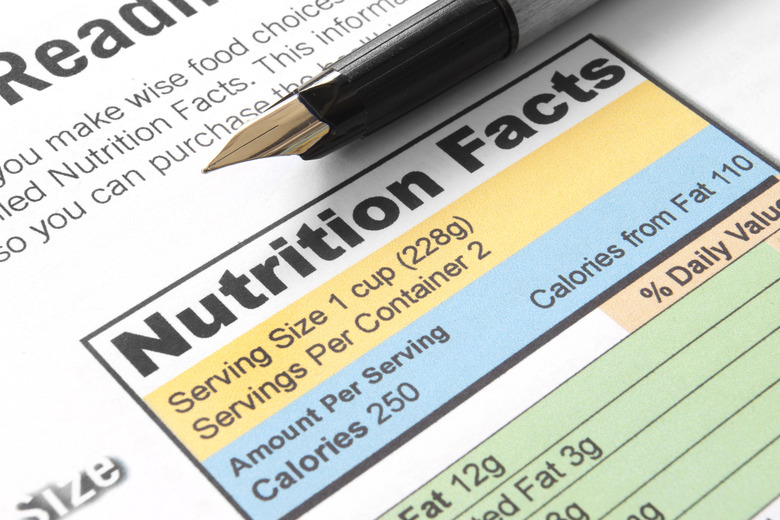Math Activities Using Nutrition Labels
The nutrition labels on food packages guide healthy food choices. They also inspire hands-on math activities for the classroom. Using the food labels can demonstrate real-life applications for basic math skills, making them more relevant for students. Gather empty food containers from your own kitchen or ask parents and fellow teachers to bring packages for you.
Problem Solving
Problem Solving
Nutrition labels provide information to create math-based word problems. The word problems you write depend on the grade level and types of operations the kids are learning. Use the nutrition data to construct the problems. A sample word problem for a cracker box label is, "Sarah ate 2 cups of the crackers for her snack. What percentage of her daily fat content did she consume?" The students need to look at the serving size to determine how many servings 2 cups would make. They use that information to determine how much fat is consumed and what percentage that would constitute.
Daily Menu Calculations
Create a daily menu based on the food labels you have on hand. The kids use the food labels to calculate the person's total fat, calories, carbohydrates, protein and sodium for the day. You can also include other nutrients on the label if desired. Have the kids compare the totals to the daily recommended amounts to determine if the person's diet was healthy or unhealthy. Give all students the same menu or make different ones and let each student present his findings.
Total Package Calculations
Total Package Calculations
Nutrition labels contain the information for individual servings. Have the kids calculate the total amount of fat, calories, carbohydrates, protein and sodium in the package. Measure out one serving according to the package. On many foods, particularly junk food, the serving size is smaller than what the average person would consume while munching. Have the kids calculate what two or three servings would be — if they think the serving size is less than they would normally consume. This engages the math skills and makes kids think about serving size and how much they are consuming when they eat more than the recommended amount.
Comparisons
Comparisons
This activity works well in small groups. Each group needs nutrition labels for similar products. In lower grades, stick with only two different products. For older kids, give them up to five labels to compare. For example, you might give a group beverage labels such as milk, juice, soda, coffee and tea. The kids make a chart with the nutrition information for each item. Have them compare the different foods in the group to determine which one is healthiest and which one is least healthy.
Cite This Article
MLA
Frost, Shelley. "Math Activities Using Nutrition Labels" sciencing.com, https://www.sciencing.com/math-activities-using-nutrition-labels-7877480/. 24 April 2017.
APA
Frost, Shelley. (2017, April 24). Math Activities Using Nutrition Labels. sciencing.com. Retrieved from https://www.sciencing.com/math-activities-using-nutrition-labels-7877480/
Chicago
Frost, Shelley. Math Activities Using Nutrition Labels last modified August 30, 2022. https://www.sciencing.com/math-activities-using-nutrition-labels-7877480/
